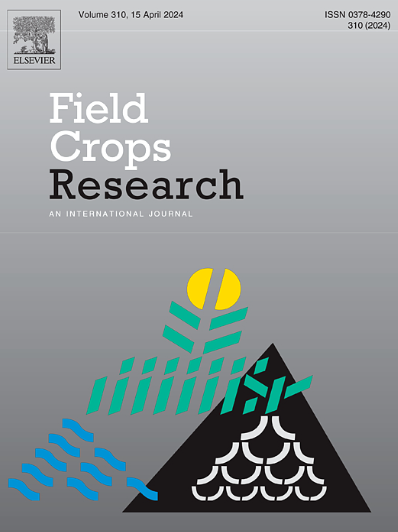重复捕捞作物对春大麦产量和硝酸盐淋失的影响
IF 5.6
1区 农林科学
Q1 AGRONOMY
引用次数: 0
摘要
背景/问题在主要作物之后的秋季种植捕捞作物,可以减少硝酸盐淋失,提高土壤肥力。若干年重复种植捕获性作物对后续主要作物籽粒产量和氮素的残留效应,以及硝态氮淋失的影响尚不清楚。方法2015 - 2022年,在丹麦不同土壤类型和气候条件下,对春大麦和收获作物进行田间试验,其中包括一种除草剂裸处理。春大麦施4个氮肥水平(0 ~ 150 %)。在2021年测量了重复捕捞作物对大麦籽粒产量和籽粒氮的残留效应,以及对2020-21年和2021 - 22年渗流期硝酸盐淋溶的残留效应。结果在复收期,平均地上生物量N在20 ~ 61 kg N ha−1 yr−1之间。重复捕获作物对籽粒产量和籽粒氮的残留效应仅在未施肥的大麦中观察到。与裸露土壤相比,捕捞作物显著减少了硝酸盐淋失,每个渗透期减少38-91 %。停止捕捞作物后,对硝酸盐淋失没有残留影响。结论4个渗流期重复捕捞作物对后续主要作物没有可测量的残留影响,对停止捕捞后的硝酸盐淋失也没有可测量的影响。为了更好地了解捕获作物的残留效应,需要对氮的固定和矿化过程及其影响因素进行更多的研究。本文章由计算机程序翻译,如有差异,请以英文原文为准。
Residual effects of repeated catch crops on spring barley yield and nitrate leaching
Context/problem
Growing catch crops in autumn after the main crop is known to reduce nitrate leaching and improve soil fertility. Residual effects of growing catch crops repeatedly for several years on the grain yield and grain nitrogen (N) of the following main crop, and nitrate leaching are less known.
Methods
We conducted field experiments with spring barley and catch crops, including an herbicide treated bare treatment, from 2015 to 2022 at two sites in Denmark, differing in soil type and climatic conditions. The spring barley was fertilized at four N levels (0–150 % of the recommended amount). The residual effect of the repeated catch crops was measured in 2021 for barley grain yield and grain N, and for nitrate leaching in the percolation periods of 2020–21 and 2021–22.
Results
During the repeated catch crop periods the average aboveground biomass N ranged between 20 and 61 kg N ha−1 yr−1. A residual effect of the repeated catch crops on grain yield and grain N was only observed in unfertilized barley. Catch crops significantly reduced nitrate leaching compared to the bare soil, with a reduction of 38–91 % per percolation period. After discontinuing the catch crops, there was no residual effect on nitrate leaching.
Conclusion
Repeated catch crops for four percolation periods did not have measurable residual effects on the following main crop, nor on nitrate leaching after their discontinuation.
Implications or significance
More research is needed on N immobilization and mineralization processes, and the factors that influence them to better understand the residual effects of catch crops.
求助全文
通过发布文献求助,成功后即可免费获取论文全文。
去求助
来源期刊

Field Crops Research
农林科学-农艺学
CiteScore
9.60
自引率
12.10%
发文量
307
审稿时长
46 days
期刊介绍:
Field Crops Research is an international journal publishing scientific articles on:
√ experimental and modelling research at field, farm and landscape levels
on temperate and tropical crops and cropping systems,
with a focus on crop ecology and physiology, agronomy, and plant genetics and breeding.
 求助内容:
求助内容: 应助结果提醒方式:
应助结果提醒方式:


